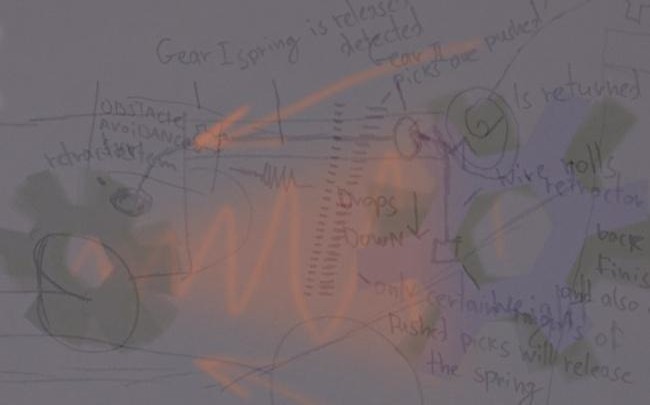Avoiding Obstacles On A Clockwork Rover On Venus - Another Design
Created On 17. Jul 2020
Updated: 2023-05-07 07:09:25.743594000 +0000
Created By: acidghost

This is an alternative concept of the obstacle avoidance sensor on of the clockwork rover on Venus.
Below are some considerations and reads made before the paper was written. The designs could be directly submitted on Herox. The guidelines and more information on the challenge can be found here: https://www.herox.com/VenusRover/guidelines. The winners did a very great job, since their contributions included also amazing representations of working prototypes. You can watch the awesome submission of this competitions winner in the video below:

My design is lacking a lot of such moments, and most importantly reliability, due to its conceptual nature, but it was fun to wreck my brain and figure out what it can be. You can read through everything mentioned below, including the references and then check out the c͢o͢n͢c͢e͢p͢t͢.
What should it do? The sensor must detect and avoid obstacles on it's way. Generally it's slopes with angle > 30 degrees and rocks about 0.35m.
What is available:
-
1 Watt Power
-
It can be maximum 1 meter length off the rover and be on a 0.875m height from the ground.
-
Lifespan 6 months. What materials can sensor have so it does not burn up? The materials should be environmentally appropriate. For example: inknel for springs, gold, titanium and silicone for insulation.
Maximum number of inputs is one rotating shaft and two wires. Wire for data transmission and power of course.
"rotating shaft may be of any size, rotated at any speed, with any amount of torque desired one wire for power, one for ground/neutral; maximum voltage difference across the wires shall be 18 V or less, and a maximum current of 600 mA (i.e. essentially can be driven by 2x 9V battery)"
"Can be assumed that the rover is capable of pushing the obstacle avoidance system with 150N of force"
So the rover itself has some power, that can be useful for the sensor.
"Obstacle detection mechanism must move a pin(s) or shaft(s) 3 cm axially, with a force of 25N.
Current rover design specifies a single pin, however, multiple pins could be considered in order to achieve the desired performance"
Some interesting facts:
- a day on Venus is about 117 Earth days.
- it has a pressure of 89 Earth atmospheres (9.0 MPa)
- this answer is interesting https://space.stackexchange.com/questions/175/what-material-properties-would-be-necessary-to-shield-a-lander-from-the-environm
We have to consider:
- how does the sensor work?
- energy for execution and the realizable force
- can it last with temperature and pressure on Venus?
Answering, a mock up on the things above, just improvising..
- The sensor works by identifying what is in front of it on some diameter. Since it can extend 1m in front and go up and down 0.875m, the data can be collected from some motion. Maybe it can move between the 0.875m distance.
- The energy can be executed from forces of: pressure, chemistry and additional wattage. Also mechanical and self calibrating mechanisms could help to reduce the needed energy or maybe something can help to 'direct' it correctly?
- It has to be made with environmentally friendly materials and somehow successfully transfer the data and execute all the power things that will be mentioned above. For this we need to check which materials can help. We have generally such conditions on Venus as about 467 degrees Celsius in the sun and -175 in the shade. The mission be will most likely done during the day otherwise the electronics will just freeze at -175°.
Note: for this challenge wasn't important to consider what could happen in some exceptional cases. Only what exactly met the requirements was relevant. Even considerations about the rover falling into a cliff, or getting stuck in some position where it could not drive off were not counted. After researching and realizing how vulnerable and unreliable a concept with electronics could be, I decided to go fully mechanical.
References:
IMU
https://en.wikipedia.org/wiki/Inertial_measurement_unit
Water on Venus
https://www.vanderbilt.edu/AnS/physics/astrocourses/AST101/readings/water_on_venus.html
Phase 1 Rover Concept
https://www.nasa.gov/sites/default/files/atoms/files/niac_2016_phasei_saunder_aree_tagged.pdf
Section: Prototyping
Back